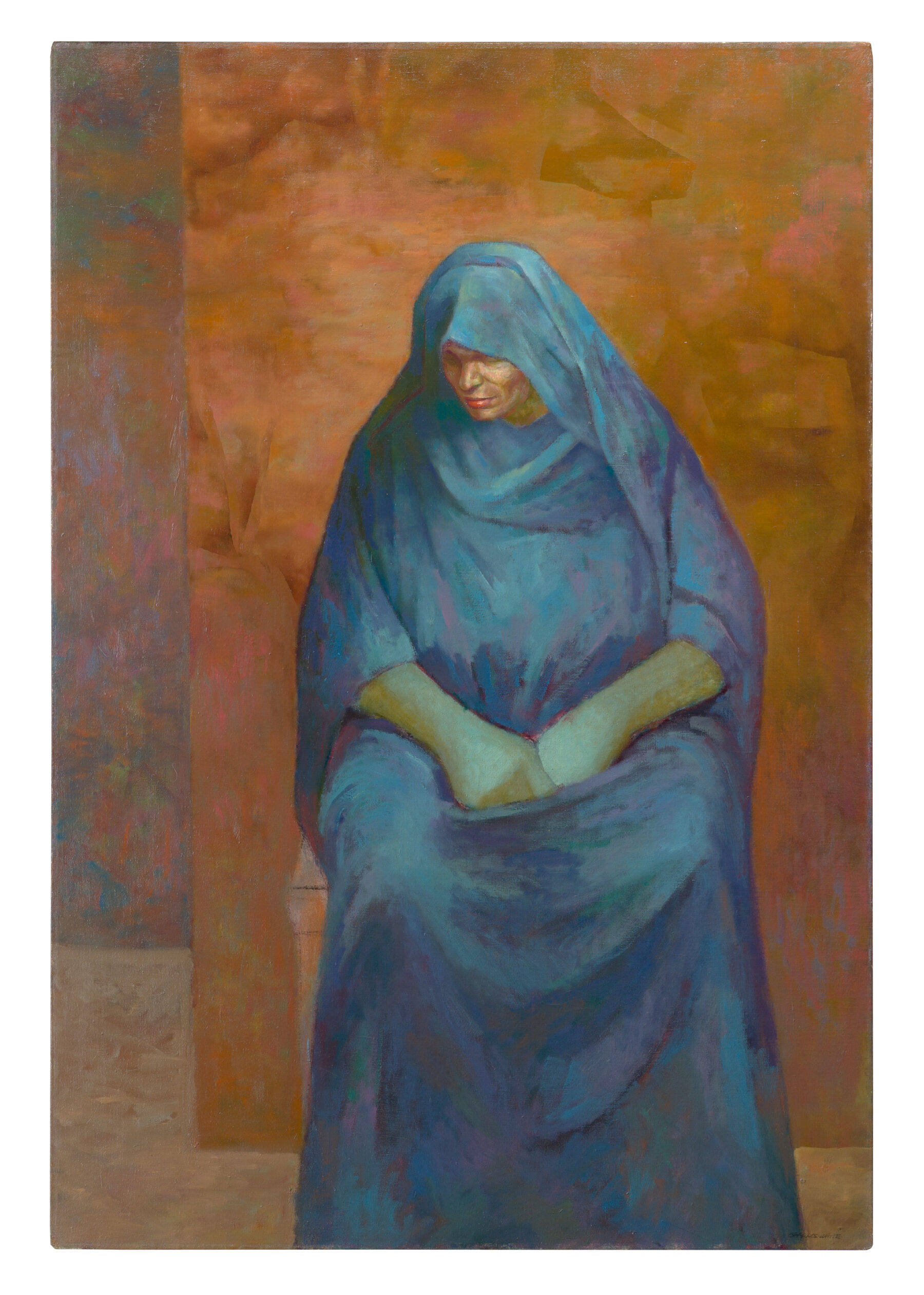Charles White
Charles White was an important American artist, activist, and educator whose influential career spannednearly four decades. Born in Chicago in 1918, White was a precocious young child raised by his mother,a domestic worker who recently migrated from Mississippi. White developed an early interest in art andreading, which were cultivated by frequent trips to the Chicago Public Library and the Art Institute ofChicago. At just 13, White received a scholarship from the James Raymond Nelson Fund to attend Saturdayclasses at the Art Institute of Chicago, which he continued into his junior year of high school. He laterenrolled as a student at the Institute and graduated in 1938. White’s early exposure to art gave him access to artists engaged in the Black Chicago Renaissance, a cultural movement that supported African American art and literature in the 1930s and 1940s.
The 1940s were formative years for White, as he developed a professional career as an artist and established his reputation, despite the challenges he faced as a Black man. In 1938, White joined the WPA as an easel painter and then a muralist. His first mural, Five Great American Negroes, was completed in 1939-40, and depictedSojourner Truth, Booker T. Washington, Frederick Douglass, Marian Anderson, and George Washington Carver. White continued to depict Black figures throughout his career, even as abstraction rose to prominence in theart world. His artworks elevated members of the Black community, from historical figures as well as ordinary farmers, preachers, mothers, and workers.
In 1941, White married sculptor Elizabeth Catlett and the two moved to New Orleans where they both held teaching positions at Dillard University. White relocated to New York in 1942 to study at the Art StudentsLeague and then traveled throughout the South on a fellowship to gather research for his next muralcommission, The Contribution of the Negro to Democracy in America at Hampton Institute, Hampton,Virginia. After briefly serving in the US Army, White and Catlett traveled to Mexico in 1946 to work at thefamed graphic arts collective Taller de Gráfica Popular, meeting artists David Alfaro Siqueros, JoséClemente Orozco, and Diego Rivera. The experience impacted White, and he remained even more committedto using his art to respond to the social and political issues of Black Americans. White’s compositions addressed the violence and heroism of the Civil Rights Movement, even as he moved away from the epicenter of the movement to California in 1956.
The present work, Woman in Blue, is among a powerful body of work depicting strong and dignified women that White completed in the early 1960s. The figure sits at the center of the composition in an indistinct, yet luminoussetting. She is painted like a solid, columnar form and cloaked in a classically inspired blue robe. The identity of the figure is concealed, with her downcast head and copious fabric draped across her body. However, the blue robe and the triangular outline of her seated body are symbolic of the Virgin Mary. White referenced religious themes in many contemporary paintings, oftenreferencing Old Testament figures or stories, such as I’m On My Way to Canaan, 1964; and Michah, 1964, and titling works after gospel songs, for example Go Tell it On The Mountain, 1961; and Move On Up A LittleHigher, 1961. Gospel music such as these titles were empowering during the Civil Rights Movement, as they were inspirational in the fight for equality and justice, and provided a sense of unity among the Black community.
In addition to his productive art career, White devoted a great deal of his life as an educator. In 1965, Whitebegan teaching at the Otis Art Institute, where he later served as Chair of the Drawing Department until his death in 1979. Among White’s students were David Hammons and Kerry James Marshall. Throughout the final decade of his life, White remained committed to his art, chronicling African American history and cultureusing labor intensive techniques. In 2018-19, White received the first major retrospective exhibition of his work in over 30 years. It was on view at the Art Institute of Chicago, the Museum of Modern Art in New York,and the Los Angeles County Museum of Art.
Charles White
Woman in Blue, 1956-66
Oil on canvas
50″ x 34″
Signed lower right
Provenance
Heritage Gallery, Los Angeles, California
Altash Kebede Fine Arts, Los Angeles, California
Private Collection, California, acquired from the above

